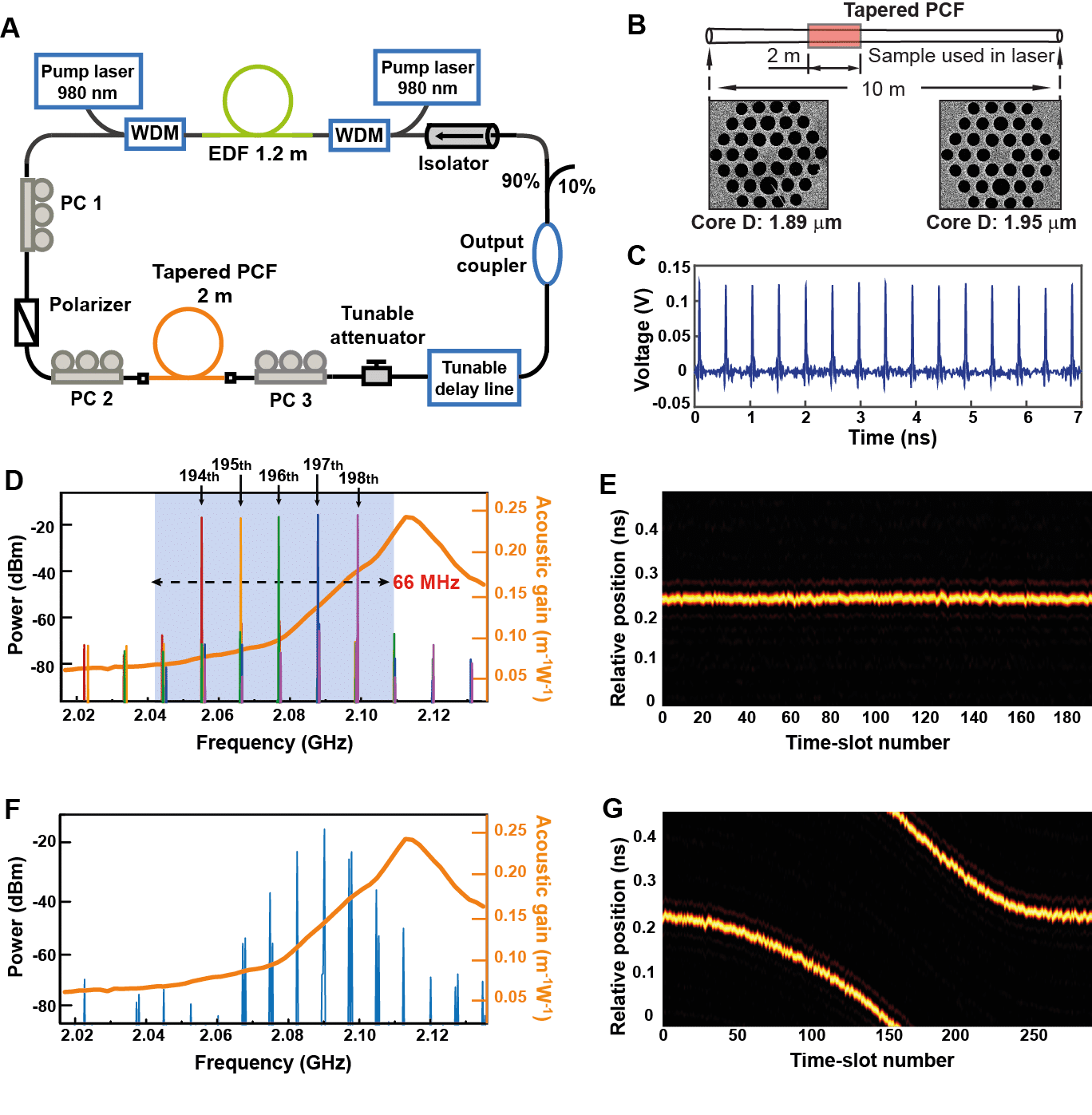
Optical Coupling of Multiple Acoustic Resonances in a PCF-based Optoacoustically Mode-locked Fibre Laser
The use of a tapered PCF in an optoacoustically mode-locked fibre laser results in the coexistence of several cavity harmonics within the broadened optoacoustic gain spectrum, enabling both selective- and co-oscillation of multiple acoustic resonances.
In recent years PCF-based optoacoustically mode-locked fibre lasers (see Fig. 1A) have proven to be a reliable platform for generating ultrashort pulse trains at GHz pulse repetition rates [1] and for long-term storage of soliton sequences [2,3]. The PCF samples used in previous set-ups were perfectly uniform along their length, resulting in high optoacoustic gain and relatively narrow (~13 MHz) gain bandwidth [1-3]. As a result, for a fiber laser with a cavity free-spectral-range (FSR) of ~10 MHz, generally only one cavity mode could fit within the narrow optoacoustic gain band, yielding a single acoustic resonant frequency. Here we demonstrate that by tapering the PCF (see Fig. 1B), the PCF acoustic gain spectrum can be broadened to ~47 MHz and that by using this tapered PCF in a mode-locked fiber laser with 10.6 MHz cavity FSR (19.1 m cavity length), several harmonics of the cavity FSR can be contained within the broadened optoacoustic gain spectrum, permitting the coexistence of several acoustic resonances.
Coupling between these acoustic resonances, mediated by a train of optical pulses circulating inside the laser cavity (see Fig. 1C), leads to several stable laser operating states. By carefully adjusting the intra-cavity polarization controllers at a pump power of ~500 mW, we could make the laser stably mode-lock at the 194th, 195th, 196th, 197th, or 198th cavity harmonic, delivering high-quality pulse train at 2.055, 2.066, 2.076, 2.087, and 2.097 GHz (see Fig. 1D). At a pulse repetition rate of 2.076 GHz, the relative positions of optical pulses in consecutive time-slots of the “temporal optomechanical lattice” [3] are shown in Fig. 1E. For each harmonic order the pulse repetition rate could in practice be tuned over a range of ~20 MHz by adjusting an intra-cavity delay line, resulting in continuous repetition-rate tuning over 66 MHz (from 2.042 GHz to 2.108 GHz marked as blue shading in Fig. 1D). By selecting proper working points of the polarization controllers, we also observed unique behaviour in which several acoustic resonances co-oscillated within the acoustic gain band (see Fig. 1F), permitting continuous sweeping of the spacing between the laser pulses (see Fig. 1G). We conjecture that the phases of these acoustic oscillations at equally-spaced frequencies were probably locked, i.e., that a pulsed acoustic wave was generated in the tapered PCF.

E-mail address: dung-han.yeh@mpl.mpg.de

Powered by Eventact EMS